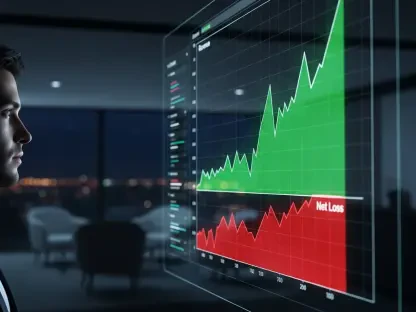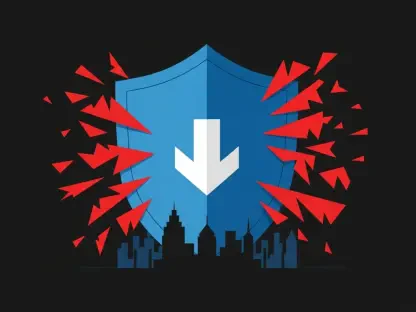Today, we’re thrilled to sit down with Simon Glairy, a leading authority in insurance and Insurtech, with deep expertise in risk management and AI-driven risk assessment. With the FERMA Seminar 2025 setting the stage for critical discussions on the evolving role of risk managers, Simon offers unique insights into navigating a complex, interconnected world. In this conversation, we’ll explore how risk managers are extending their influence beyond traditional boundaries, the growing impact of climate risks on business, and the strategic shifts needed to build resilience across entire ecosystems.
Can you explain what the theme ‘Going Beyond the Value Chain’ means for risk managers, as highlighted at the FERMA Seminar 2025?
Absolutely. ‘Going Beyond the Value Chain’ signals a fundamental shift in the role of risk managers. It’s about recognizing that risks don’t stop at the walls of your organization. Today, we’re dealing with interconnected systems—suppliers, investors, regulators, even societal expectations—that all play a part in a company’s risk profile. For risk managers, this means taking a broader view, anticipating how disruptions in one part of the ecosystem can ripple through the entire chain. It’s a call to be proactive, to influence and mitigate risks at every level, not just react to them within your own operations.
How do you see the increasing complexity and unpredictability of the world, as mentioned by FERMA’s leadership, impacting risk managers today?
The complexity and unpredictability we’re seeing stem from a mix of global trends—think geopolitical tensions, rapid technological advancements, and climate change. These factors create a web of risks that are harder to predict and manage. For instance, a geopolitical event in one region can disrupt supply chains globally overnight. Risk managers are now tasked with staying ahead of these uncertainties, often using data analytics and scenario planning to map out potential outcomes. Adaptability is key; they’re learning to pivot quickly while still maintaining a long-term perspective on resilience.
What strategies can risk managers use to build resilience across the entire value chain, not just within their own organizations?
Building resilience across the value chain starts with collaboration. Risk managers need to engage with suppliers, partners, and even regulators to identify shared vulnerabilities and create joint mitigation plans. Practical steps include mapping out the entire chain to pinpoint critical dependencies and stress-testing those links under various scenarios. Some companies in the manufacturing sector, for example, are already doing this by diversifying suppliers to avoid over-reliance on a single source. It’s about creating a network of trust and shared responsibility, where everyone is invested in collective stability.
With a new CEO stepping into FERMA, what do you think this leadership change might mean for the organization’s direction in risk management?
Laurent Nihoul’s background in insurance and risk management, particularly his experience at a global industrial giant, brings a very practical, industry-rooted perspective to FERMA. I expect he’ll push for initiatives that bridge the gap between theoretical risk frameworks and real-world application. His time leading insurance strategies likely means a focus on innovative tools like captives and a stronger emphasis on aligning risk management with business outcomes. We might see FERMA advocate more for tailored, sector-specific solutions under his leadership.
Why do you believe moving beyond short-term crisis management to long-term risk strategies is so crucial right now?
Short-term crisis management is like putting out fires—it’s necessary, but if that’s all you’re doing, you’re never addressing the root causes. Focusing only on the immediate can leave organizations blindsided by bigger, slower-building risks like climate change or regulatory shifts. Long-term strategies allow risk managers to embed risk considerations into the core of business planning, ensuring that resilience becomes a competitive advantage. It’s about anticipating change, not just surviving it, and aligning risk management with the company’s broader vision.
How are physical climate risks already disrupting value chains, and what have you observed in terms of business impact?
Physical climate risks are no longer a future problem—they’re here. We’re seeing extreme weather events like floods and hurricanes disrupt supply chains, damage infrastructure, and halt operations. For example, I’ve come across cases where agricultural businesses have faced massive losses due to drought, which then affects retailers and consumers down the line. These disruptions hit profitability hard and create financial instability. Companies are starting to feel the pressure to adapt, whether it’s relocating facilities or rethinking sourcing strategies to account for climate vulnerabilities.
Given the projection that climate risks could cost businesses trillions annually by 2050, how should risk managers prioritize this in their planning?
Risk managers need to treat climate risk as a top-tier priority, not a side issue. This means integrating environmental factors into every level of strategic planning. Tools like climate modeling and risk assessment software can help quantify potential impacts and identify high-risk areas. To get leadership on board, it’s crucial to frame resilience as an investment in long-term value, not just a cost. Show them the numbers—potential losses versus the cost of mitigation—and highlight how proactive measures can protect market position and stakeholder trust.
What is your forecast for the future of risk management in addressing these complex, interconnected challenges?
I see risk management evolving into a much more strategic and tech-driven field over the next decade. With challenges like climate change, geopolitical instability, and digital disruption only growing, risk managers will increasingly rely on advanced tools—think AI and predictive analytics—to anticipate and mitigate threats. I also expect a deeper integration of risk management into corporate strategy, where it’s not just a defensive function but a driver of innovation and growth. The future will belong to those who can turn uncertainty into opportunity, and I’m optimistic that the profession is heading in that direction.









